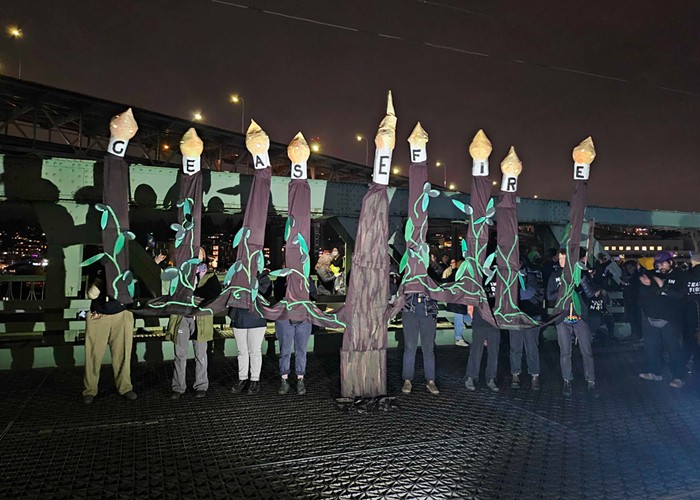"Seattle's become chaos and lawless like Mogadishu city where I came from," a Seattle cabbie lamented during public comment at an April 4 hearing before the Seattle City Council. Taxi drivers had packed the council chamber to demand that the city stop for-hire vehicles and out-of-town taxis from illegally stealing their passengers.
"It's like Somali pirates," the driver fumed.
But the for-hire drivers had turned out in force to plead their case, too. "All we're asking is to be treated equally," one driver implored. "Why not give us the same rights as taxis? We need fairness."
There's a civil war of sorts brewing within the city's highly regulated taxi, for-hire, and limousine industry, and while we aren't exactly becoming Mogadishu on the Sound, drivers on both sides worry that the dispute could escalate to violence. At stake are the livelihoods of thousands of drivers, mostly East African immigrants, as well as the long-term health of Seattle's $75 million taxi industry that is itself a crucial component of the region's $5.9 billion tourism industry. But even as the industry descends into an increasingly contentious turf war, upstart companies providing short-term rental and ridesharing services—many of them operating entirely outside the established regulatory regime—are threatening to eat its lunch.
Still, if there's one thing these drivers agree on, it's that the city is to blame. For-hire drivers blame the city for creating regulations that make it impossible for them to earn a decent living, while taxi drivers and owners blame the city for not enforcing the laws and regulations already in place.
"The city created this problem, and it's the city who must fix it," another speaker proclaimed, to applause from both sides.
"You know, we don't have to do this," Council Member Bruce Harrell reminded the audience. This was the second of five scheduled hearings before the Committee on Taxi, For-Hire, and Limousine Regulations, which was convened by Council President Sally Clark specifically to address the dispute. In July, the council will issue the results of a study determining whether there is a sufficient supply of cabs, after which the committee will consider reforms, including licensing more taxis.
Part of the problem is that few customers can tell the difference between a taxi and a for-hire vehicle. For-hire companies are required to paint their cars in two tones (to distinguish from single-tone cabs), but owners still manage to creatively paint them to look like taxis. Only taxis have those iconic lights on top, but some for-hire vehicles mount a sign on the roof, creating further visual confusion.
The bigger difference is regulatory. Taxi fares are regulated by the city and county, and are metered by distance and time, whereas for-hire fares are flat rates by zone, hour, or prior negotiation. But most importantly, only taxis are authorized to pick up passengers that hail them off the street or at designated taxi stands, whereas for-hire vehicles (and limos) can only pick up passengers by "prearrangement."
Hail a for-hire vehicle outside a Seattle bar on a Friday night, and if they pick you up, they're breaking the law. But how are you to know?
There are about 1,400 taxis and for-hire vehicles licensed in Seattle and King County (plus another 763 town cars and limousines), but only 688 taxis licensed to pick up passengers within Seattle. And to make matters worse, cabbies claim that taxis from Tacoma, Everett, and surrounding areas are driving into Seattle on Fridays and Saturdays to feast on our busy nightlife scene, illegally picking up fares. This is the chaos and lawlessness that local taxi drivers are complaining about, a state of anarchy that only took hold over the past few years.
"It used to be good," Orange cabbie Adane Biza told me on the ride back to the office after the council hearing. "It's completely different now."
So why the artificial distinction? Why shouldn't for-hire vehicles be allowed to pick up passengers the same way a taxi can? From a policy perspective, it's all a question of supply and demand, explains Seattle Consumer Affairs director Denise Movius. The city limits the number of taxi licenses in order to maintain a "competitive, safe, fair, and viable" industry, she says. "The concern is if you flood the market with too many cabs, no one will make a living."
But many drivers argue that supply and demand is exactly the problem. There are 928 licensed taxicabs in Seattle and King County, but nearly 6,000 licensed taxi drivers. This puts drivers at the mercy of a few hundred car owners, many of whom own multiple licenses. While the city caps the lease payment an owner can charge at $85 a shift, some drivers claim that they are charged a higher rate. That would be illegal, says Movius, but many "drivers are afraid to report violations for fear of losing their lease to drive the taxicabs."
But even at the $85 lease rate, fuel and other fees drive the cost up to an average of $120 a shift. The city estimates that the typical driver earns a $100 profit on an average 10-plus-hour shift. Nine hours into his shift, Biza told me that he had only made about $40 above his $110 up-front cost.
And while taxi licenses remain in short supply, the competition for passengers is only about to get worse.
Forget bikes and transit; the secret weapon in Seattle's war on cars is turning out to be... cars.
Car-share services like ZipCar and Car2Go are rewriting the rules of urban transportation. At a rental rate of $0.38 per minute, Car2Go is substantially cheaper than taking a cab. Meanwhile, app-based rideshare and dispatching services like SideCar, Lyft, and Uber, critics say, are ignoring the rules entirely. The Seattle City Attorney's Office has determined "that SideCar—and similar businesses—are subject to for-hire vehicle licensing and regulation requirements," Movius confirms. Yet none of their drivers or vehicles are certified, licensed, or inspected.
SideCar's vice president of communications, Margaret Ryan, objects to this for-hire classification: "SideCar is not a taxi," insists Ryan. "There are no shifts, drivers drive whenever they like, and payment is voluntary."
Well, not exactly. I tested SideCar on the way to City Hall, drawing a driver who drove all the way from Fremont to pick me up on Capitol Hill for a mere $7 "suggested donation."
Why?
During SideCar's introductory phase, he's being guaranteed a minimum of $15 an hour to cover a midday shift. Ryan confirmed the policy.
To me, that doesn't seem like a donation. That looks like a salary.
Council President Clark agrees that SideCar is likely subject to for-hire regulation, but she admits, "We haven't figured out how yet."
That said, SideCar worked great—better than the Taxi Magic app, which efficiently dispatched my Orange cab but failed to track its progress or allow me to pay. And even experienced taxi, limo, and for-hire drivers admit that Uber offers customers a far superior user experience. Whether or not SideCar and Uber survive regulatory scrutiny, their apps show the way to the future of dispatching rides.
But for the moment at least, these app-based services have nothing to fear from impotent regulators, even if they are blatantly violating the rules. With only three inspectors in the city's consumer-affairs division, regulators can't even police Seattle's current wave of illegal pickups. So whatever rule changes the council ultimately approves, it all could be meaningless unless they back it up with the resources necessary to reassert the rule of law. ![]()


















